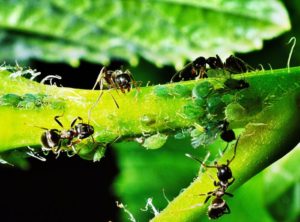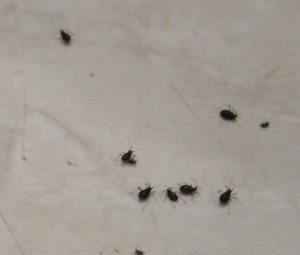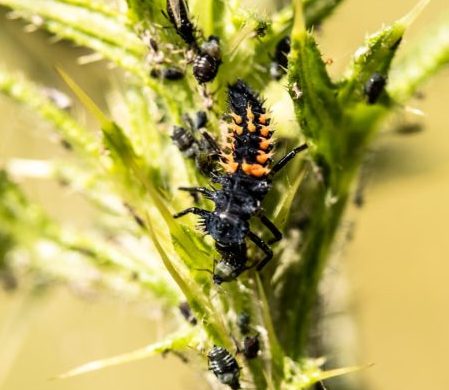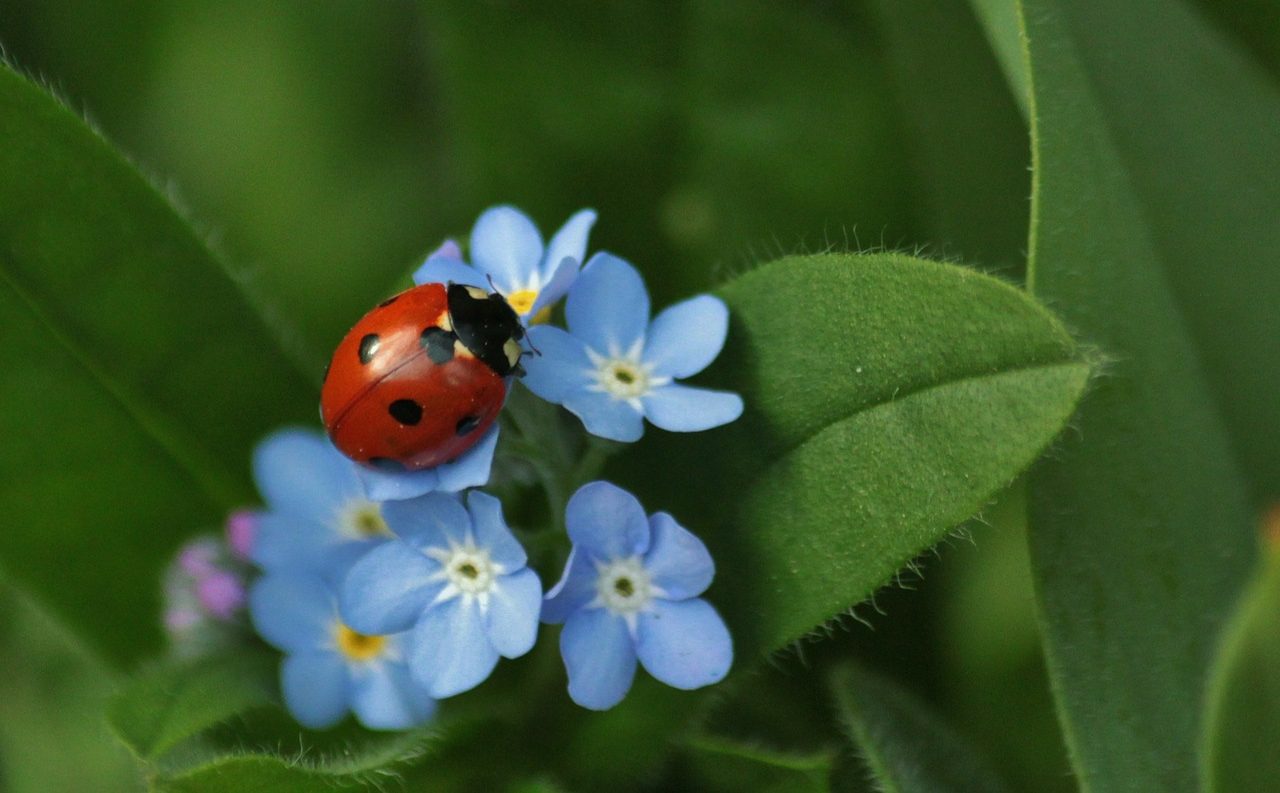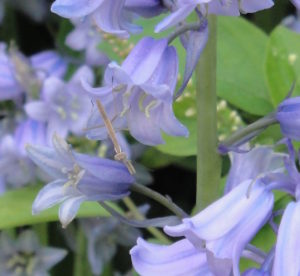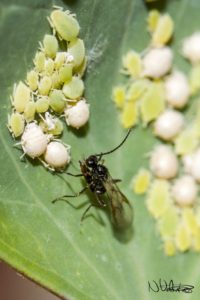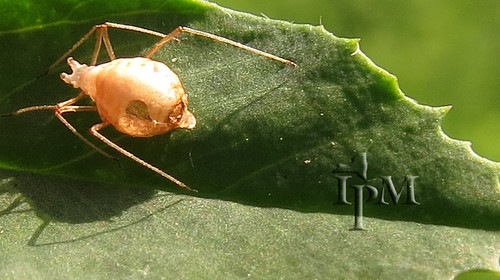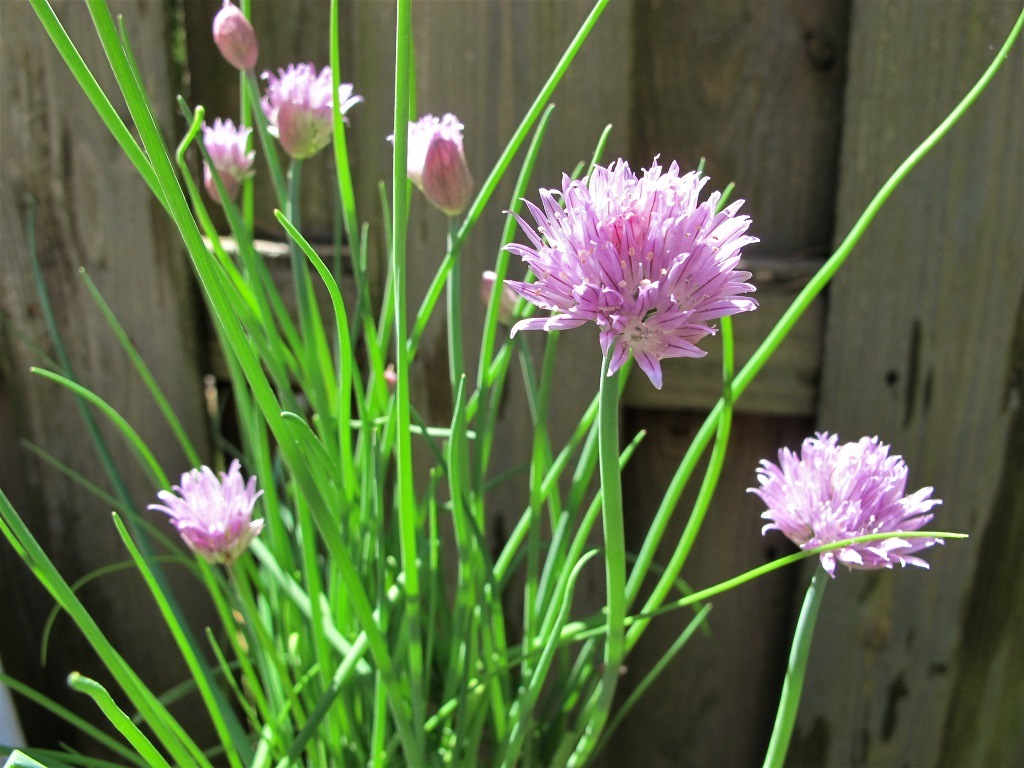2018
Here Come the Aphids and Other Pests!
Springtime here in North Carolina was quite cool, but the temperatures are now in a more predictable, springlike pattern. For weeks now, we have been seeing outbreaks of certain insects, notably aphids.
Onion Aphids
If you have chives, one of the first perennial herbs to emerge, you might notice aggregations of little black insects clinging to the leaves. Unless you look closely, you might think it’s just dirt. These onion aphids can be squished between your fingers, or use a strong squirt of water from the hose. Luckily, aphids are easily killed. If you must do something, mix up a solution of horticultural oil or insecticidal soap in a spray bottle.
There are around 5,000 species of aphids, and they come in almost every color of the rainbow. They are most common in temperate zones around the globe.
A mouthpart called the stylet pierces phloem tubes of stems and leaves, and sometimes roots, of a wide variety of plants. Phloem carries products of photosynthesis, rich with sugars and other nutrients in solution, so it’s no surprise aphids target the phloem tubes. Aphid saliva can distort the leaves, curling around and protecting the feeding insects from predators. Unchecked infestations can remove so much sustenance from a seedling that vigor is severely compromised.
The photograph above shows aphids, and ants feeding on their “honeydew”, or excrement. The presence of ants often is an indication that aphids are nearby. Ants fiercely protect aphids, and the food they generate, from predators.
Viral diseases are spread by aphids, and can kill your vegetables. This is why it’s so important to inspect your transplants by looking at the growing tip, the stems, and the reverse (bottom) of the leaf, where aphids tend to congregate. Look very closely, because the color of the aphid is often the color of the plant, a very effective camouflage.
Amazing Aphids
Aphids reproduce asexually (no males; this is called parthenogenesis) by giving birth to cloned live female aphids (viviparity), or nymphs—lots of them. They bypass the egg-larva-pupa stages. And about a week later, those young aphids will begin to give live birth to another generation. So, you can see how their populations can build exponentially if unchecked.
When aphids are actively reproducing, they’re present in large numbers, feeding from those nutrient-rich phloem tubes. You might notice the honeydew deposited on the foliage below them. This clear layer of sweet and sticky residue often attracts ants. Eventually, black sooty mold spores will land on the honeydew and develop into a dark film that cuts off light to the leaves.
(***Update***: These black onion aphids in the photograph dropped off a chives plant that I had brought inside in January, 2021. Dinner for the betta.)
In autumn or when food becomes scarce, winged adult aphids mate, after which females will lay eggs. This ensures genetic diversity and broader territories. Eggs overwinter, and hatch into wingless females in spring.
Ladybugs
- Larval form of ladybug.
- Adult ladybug on forget-me-not.
Now you might be wondering, “Why are there so many aphids so early in the year?” Populations of various insects build up in the local environment as numbers of predators gradually increase. You sometimes see a ladybug on a warm winter day, but it won’t be until all the “food is on the table” that you’ll see greater numbers of ladybugs and other predators coming in for the feast.
The larva, or immature form, of the ladybug is a grayish-black and orange crawler (photo, above) that resembles an alligator. Although the adults feed on aphids, the larvae consume huge numbers of them. Always identify the insects before deciding if they’re “good” or “bad”. Look up your local Agricultural Extension Service websites for excellent photographs and advice.
Braconid Wasps
The ladybugs will be joined by many other beneficial spiders and insects, including green lacewings, hover flies, praying mantises, and the rarely noticed and underappreciated species of Braconid wasps. No, these wasps won’t make anyone run for cover. They’re hardly noticeable slender insects, and many are less than 1/8″ long.
Braconid wasps lay eggs inside the aphids, where the immature larvae kill the aphids by feeding on their tissues. That’s called endoparisitism. Then they transform into adult wasps, emerging from the dried aphid exoskeleton and flying away to mate and to carry on the family tradition. Depending on the species and temperature, it usually takes 2 to 3 weeks for the adult wasp to emerge.
Adults also occasionally consume aphids. Each female braconid wasp can parasitize about 200 aphids in her brief lifetime.
Aphid Mummies
What remains after the parasitic wasp emerges from the hollowed-out aphid is a black- or tan-colored shell, called an aphid mummy. If your eyesight is good, or with the help of a magnifying glass, you can see the hole where the wasp exited the aphid (photo, above).
Unless the aphid infestation is going to cause irreparable harm to the plant, let nature take its course, or just wash most of it away with water. Attacking every unidentified and supposedly “bad bug” with the arsenal you’ve assembled from the garden center upsets the balance that Mother Nature has provided. Accepting a blemish here and there is a small price to pay for choosing to foster a healthy ecological system in your own yard.
When harmful insects get way ahead of the game, though, it’s time to take appropriate action. But try to use a more benign approach that will accomplish the goal without poisoning the environment. Try squishing them or spraying a blast of water from the hose first. That should remove most of the insect pests.
If that’s not satisfactory, use a targeted application of insecticidal soap or horticultural oil, not a wholesale spraying of the entire garden. Over time, you’ll notice fewer insect pests and more beneficials as your property approaches a natural equilibrium between the two. But first, learn to identify the commonly found insects in your area—both the good ones and the bad ones.
Sustaining the Population
To keep populations of Braconid wasps around your property, you’ll need to provide the adults with sources of food when few aphids are around to sustain them. The adults look for nectar in the small flowers of the carrot family (Apiaceae), including parsley, cilantro, dill, and wild carrot.
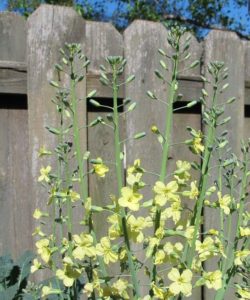
Broccoli ‘Arcadia’ flowers, April 2020.
Their diet also includes nectar from flowers of brassicas, such as broccoli, kale, collards, arugula, and land cress, appearing in late winter to spring. The early flowers of fruit trees, shrubs, bulbs, and other plants also provide sustenance.
I don’t pull out the older spring blooming greens in the vegetable garden until the beneficial insects have had a chance to feed from them. Consider letting some of the early blooming garden weeds hang around for a while, pulling them before seeds mature.
Several generations of these little wasps will populate your garden each year. There are thousands of species of Braconid wasps, each one seeking battle with a particular enemy. Include a variety of native trees, shrubs, and flowers for the species of insects that are native to your area. Planting species that flower at different times of the year helps the insects gain a sustainable presence in your yard.
If you’ve ever seen how quickly aphids can take over, you’ll want to encourage Braconid wasps to remain on the property in order to control their populations. Avoid spraying anything in the garden, if at all possible, which kills beneficial insects as well as the harmful ones.
A Little Help For Our Friends
So, before you snip some leaves from your chives plant for tonight’s baked potato, look for these tiny black onion aphids. You might find some of the aphid mummies left behind on the chives or on the backs of the leaves of overwintering broccoli or kale.
Once you’ve learned how to identify braconid wasps, learn to live with these tiny warriors by providing what they need. Help them help you…
